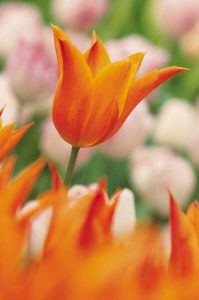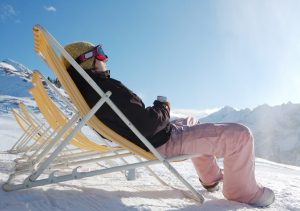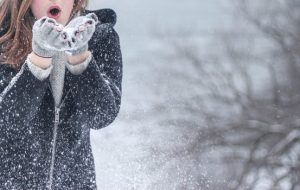General Health Articles
In the News: With Spring Comes Hay Fever
Spring is finally here! After a long and cold winter, everyone is in their glory with the sunshine and warm weather.
However, coming hand-in-hand with the blooming season is some people's dreaded seasonal nightmare: hay fever.
One of the best plans of action for fighting spring allergies is to avoid the things that make your sneezing, itching and watering eyes worse. Warren V. Filley, M.D., a spokesperson for the American Academy of Allergy, Asthma and Immunology, recently told www.health.com which plants you should avoid.
 Spring Hay Fever
Spring Hay Fever
- Ragweed : It is common along riverbanks and in rural areas. Dr. Filley says that almost 75 percent of people with allergies are sensitive to ragweed.
- Mountain cedar :This tree is commonly found in mountainous regions and, according to Dr. Filley, causes some of the “most severe allergy symptoms I have ever seen.”
- Maple : These trees are found along streams and in woods all through the eastern United States and Canada. The maple produces potent allergens.
- Elm : Common in the wetlands, these trees will most likely aggravate your allergies.
- Mulberry : This pretty tree can be very deceiving. Found in woods and river valleys, it is often associated with contributing to hay fever.
- Pecan : Although it makes many good desserts, the pollen from pecan : found in woods and orchards : is second only to ragweed as the most severe source of allergens.
- Oak : It may have less potent pollen, but it produces very large quantities of it, Dr. Filley says. Avoid the woods just for this one.
- Pigweed/Tumbleweed : This common weed is found in lawns and along roadsides, but be aware.
Spring 101: Gear Up for the Season
As the ice and snow start to melt and the mercury starts to rise again, everyone starts to think about getting back in shape for the spring and summer seasons. Instead of hitting the exercise hard, many experts suggest easing back into your springtime routine
 Spring health tips
Spring health tips
Start Slow. Take the time you need to jump start your spring diet and exercise plan. By easing into your regimen, you will be more successful in keeping with your diet and exercise plan.
Plan a New Menu. You need to really look at your diet and the number of calories you are consuming daily. Choose foods that are low in calories but are filling to help you fight off the hunger throughout the day.
Get outdoors. Now that the weather is breaking, mix up your exercise routine and enjoy the weather outdoors. Walk, hike, bike, run , enjoy yourself and the beautiful season.
How Healthy Are You? Take This Quiz and Find Out!
If you are looking to “get fit” in 2019, take these three self-tests to find out how fit you are first!

How are your muscles? Do some push-ups. A 30-year old man should be able to 35 push-ups while a 30-year old woman should be able to do 45, while her knees are on the floor. For every decade after 30, the number of push-ups decreases by 5 for each gender.
How is your flexibility? Sit on the floor with your legs straight in front of you, slightly apart. Extend your arms placing your one hand on top of your other hand, fingertips forward and reach for the space in between your feet. Women under the age of 46 should be able to reach at least two to four inches past your feet.
Older women should be able to reach the soles of their feet. Men under the age of 46 should be able to reach the soles of their feet. Older men should aim to be within three to four inches of their soles.
What's your heart rate? Begin by exercising for 18 minutes at 80 to 85 percent of your maximum heart rate : for men, 220 minus your age; for women, 208 minus .82 times your age. Then exercise all out for three minutes. Check your pulse. Rest for two minutes and then check it again. Your heart rate should have dropped by at least 66 beats. The faster it drops the more fit you are.
Winter Motivation Tips
When the weather outside is frightful, it's easy to get lazy and to lack the motivation to even get out of bed some days. So how do you stay motivated when everything is keeping you down? Try some of these tips:

- Set goals and document them. By keeping a list, you will see this daily and you will feel more inclined to want to check things off this list.
- Set clear dates of when you need to complete things by, whether they are long term or short-term goals. By giving yourself a deadline, you will work harder to keep them.
- Reward yourself for meeting your deadlines and reaching your goals. Whether you allow yourself to buy something nice or a day of pampering at the spa, you will work harder to do things when you know there is a reward at the end.
- Listen to motivational tapes and/or read motivational books to help gain some inspiration to keep going.
- Learn to breathe correctly. You will feel more relaxed and when you are more relaxed you will also be more apt to stay motivated than when you are stressed.
- Keep a positive attitude. Even though it is easy to be depressed when the long, cold winter months drag on, try to remain positive and you will notice that motivation comes along with being happy.
- Remind yourself that progress is what is important and not perfection. This is especially important when you are looking at your long-term goals, as they may seem like the most unreachable. Remember all of the short-term goals that you have met, and you will be more successful.
- Build a support system of friends and family members that are typically motivated. By keeping like-minded people close to you, you will become motivated by just being in their presence.
Cold Weather Skin Tips
The winter months are some of the harshest months on your delicate skin. But you can follow these tips to help protect your skin from the harshness of winter and your body will thank you for it.

Don't forget the sunscreen. Just because the temperature drops doesn't mean the ultraviolet rays have gone away. While the UVB rays are weaker, you shouldn't skimp on the sunscreen during the winter months. Dermatologists suggest using a cream or moisturizer with an SPF of 30 year-round.
Turn down the thermostat , just a few degrees. Surprisingly people who spend most of their time outdoors aren't the ones with dry, peeling skin. It is just the opposite. Those people who spend their time indoors with indoor heat constantly are those who experience parched skin the most. If you can, turn down the thermostat a few degrees and use a humidifier to put some moisture in the air. This combination will help to replace some moisture in your skin and will alleviate parched skin.
Skip the long, hot baths. While a good long soak in a hot bath sounds like just what the doctor ordered after a day out in the elements, that hot bath is a big no-no when it comes to protecting your skin in the cold. Taking a bath that is warmer than your body temperature opens your pores and releases the moisture that your body desperately needs during the winter. If you would like a bath over a shower, limit your time in the tub to about five minutes and be sure to use a creamy oil wash to give your skin that moisture back that it may lose.
Exfoliate those rough feet. While the logical cure for dry feet is to moisturize them, dermatologists suggest that exfoliating your feet should be the cure instead. A moisturizer cannot work if you continue to put it on dead skin. Once you get rid of those rough spots on your feet, then the moisturizer you use will take to your feet so much better. Try a crystal buffer while your feet are damp or a stainless-steel file while your feet are dry for the best results.

